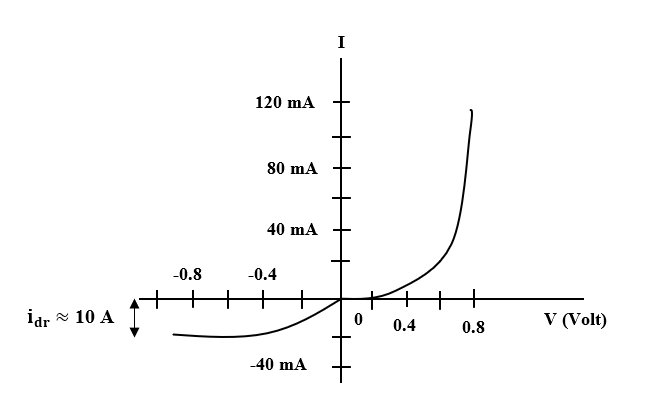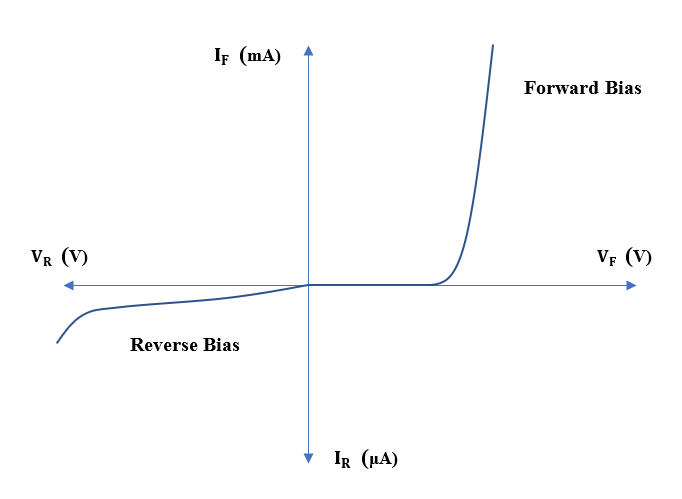
Figure shows a qualitative plot of current vs potential difference for a p-n junction. Which one of the following is true regarding the given graph.

A. Junction offers a little resistance if we try to pass an electric current from p-side to the n-side.
B. Junction offers a high resistance if we try to pass an electric current from n-side to the p-side.
C. The device which allows current in both the direction (forward as well as backward) is called as ideal junction or diode
D. Both A and B

Answer
558k+ views
Hint: In forward biasing condition, a negative voltage is applied to the N-type material and a positive voltage is applied to the P-type material, Due to this type of biasing, the width of the depletion layer decreases. In reverse biasing condition, a negative voltage is applied to the N-type material and a positive voltage is applied to the P-type material, Due to this type of biasing, the width of the depletion layer increases.
Complete step by step answer:
Typical current vs potential difference characteristic for a p-n junction is given below.

When the p-n junction diode is in forward bias, the depletion layer is thin. Due to which a small resistance is offered to the electric current passing from p-side to n-side.
When the p-n junction diode is in reverse bias, the depletion layer is thick due to which a large resistance is offered to the electric current passing from n-side to p-side.
So, the correct answer is “Option D”.
Note: Students must not get confused between forward bias and reverse bias. When the junction diode is connected in forward bias, the diode acts like a short circuit which allows full circuit current to flow. Whereas when the junction diode is connected in reverse bias, the diode acts like an open circuit blocking any current to flow through it. But, when it is in reverse bias, a small leakage current does flow through the circuit.
Complete step by step answer:
Typical current vs potential difference characteristic for a p-n junction is given below.

When the p-n junction diode is in forward bias, the depletion layer is thin. Due to which a small resistance is offered to the electric current passing from p-side to n-side.
When the p-n junction diode is in reverse bias, the depletion layer is thick due to which a large resistance is offered to the electric current passing from n-side to p-side.
So, the correct answer is “Option D”.
Note: Students must not get confused between forward bias and reverse bias. When the junction diode is connected in forward bias, the diode acts like a short circuit which allows full circuit current to flow. Whereas when the junction diode is connected in reverse bias, the diode acts like an open circuit blocking any current to flow through it. But, when it is in reverse bias, a small leakage current does flow through the circuit.
Recently Updated Pages
Master Class 12 Economics: Engaging Questions & Answers for Success

Master Class 12 Maths: Engaging Questions & Answers for Success

Master Class 12 Biology: Engaging Questions & Answers for Success

Master Class 12 Physics: Engaging Questions & Answers for Success

Basicity of sulphurous acid and sulphuric acid are

Master Class 12 Business Studies: Engaging Questions & Answers for Success

Trending doubts
How much time does it take to bleed after eating p class 12 biology CBSE

Explain sex determination in humans with line diag class 12 biology CBSE

Differentiate between homogeneous and heterogeneous class 12 chemistry CBSE

When was the first election held in India a 194748 class 12 sst CBSE

Explain sex determination in humans with the help of class 12 biology CBSE

December 10th of 1948 is an important day in the history class 12 sst CBSE




